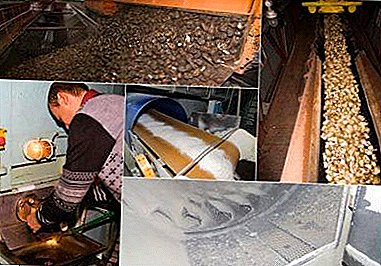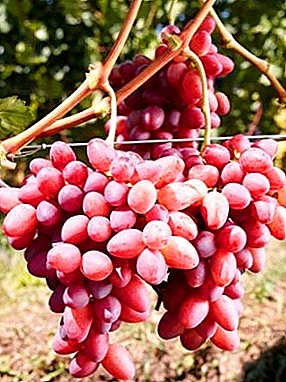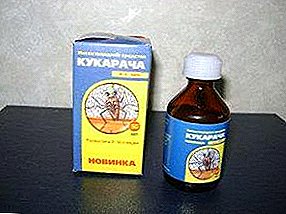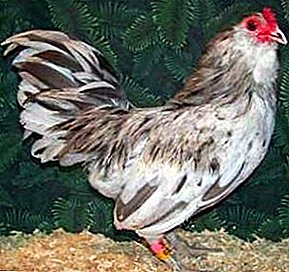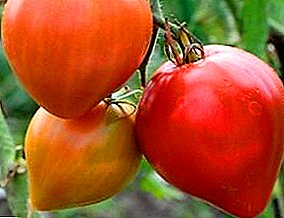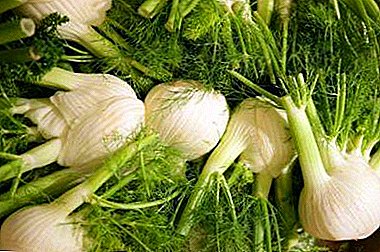
Many have heard of fennel. One of the most useful parts of this plant is the root, which contains nutrients and trace elements.
The root of the plant has found wide application in medicine. It is used for the treatment and prevention of many diseases. In addition, fennel root is used to prepare a variety of dishes.
Fennel root hides a huge benefit. What is fennel root famous for? Let's figure it out together.
Is it an onion or not?
Indeed, it is an onion, distinguished by a fleshy, thickened and dense structure. Fennel root fusiform shape, structure - wrinkled. It has a sweetish taste and aroma of anise, white-yellowish color.
Fennel bunches resemble dill, but outwardly they are larger. Fennel is one of the representatives of the umbrella family. Homeland plants - the Mediterranean, but met in ancient times and in Asian regions.
Useful and healing properties
Before talking about the benefits of this part of the plant, consider the composition and determine what vitamins and trace elements this part of the plant is rich in.
Chemical composition
Each trace element and vitamin is taken at the rate of 100 grams of fennel.
 Vitamins:
Vitamins:
- Vitamin A - 8 micrograms.
- Vitamin B1 - 0.01 mg.
- Vitamin B5 - 0,232 mg.
- Vitamin B6 - 0, 048 mg.
- Vitamin C - 13 mg.
- Vitamin PP - 0.64 mg.
Trace elements:
- Iron - 0.74 mg.
- Manganese - 0.191 mg.
- Selenium - 0.7 mcg.
- Zinc - 2 mg.
- Magnesium - 17 mg.
- Sodium - 51 mg.
- Potassium - 415 mg.
- Phosphorus - 50 mg.
In ancient times, healers revered this plant. And that's why:
- Fennel root has a positive effect on various systems in the human body - nervous, respiratory, digestive, etc.
- For the digestive system, it is useful because it fights flatulence, pains in the stomach and intestines, stimulates appetite and helps with dysbacteriosis.
- The respiratory system with the help of it improves its condition, because The plant is able to reduce mucus formation, helps with bronchitis and cold.
- For the cardiovascular system, the use is also useful because it improves blood circulation.
- Fennel root affects the urogenital system, fights urolithiasis.
- Eating has a beneficial effect on the nervous system, relieving tension, improving visual, tactile perception and improves sleep in both adults and children.
- The effectiveness of the root is proved by scientists and physicians in case of skin lesions (bruises, acne, boils), eyes (edema) and liver (poisoning by mushrooms and alcohol).
Indications for use
Apply fennel root in the following cases:
- The presence of benign and malignant tumors. This is due to the fact that trace elements and antioxidants that are part of, are able to inhibit the growth of tumors and improper division of tissues.
- Digestive problems. Having a disorder of the gastrointestinal tract, it should be eaten, the plant is a stimulator of digestive processes, can improve stool, relieve meteorism and improve metabolism.
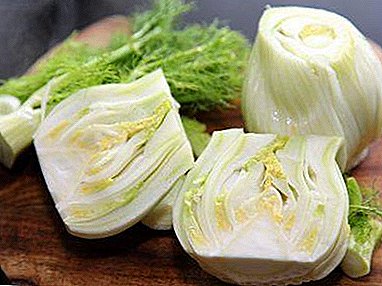 Nervous system problems. Fennel root is an antidepressant that can relieve tension and stress.
Nervous system problems. Fennel root is an antidepressant that can relieve tension and stress.- Prevention of SARS and other infectious diseases. Having a large amount of vitamin C in the composition, fennel root can improve immunity. He also fights against viruses and bacteria, has an expectorant effect.
- Blurred vision. Eating fennel root is the key to successfully preventing premature aging of the eyes. Juice is used as an eyeliner to relieve fatigue and redness.
- Iron deficiency and low hemoglobin. At the root of fennel contains not only iron, but also histidine - a substance that fights against anemia.
- Disturbed hormonal background. Fennel root is used by women during menopause and painful menstruation.
- Cleansing the body of harmful substances, toxins and slags. Fennel root has a diuretic effect, through which you can cleanse your body without harm.
Daily dose of fennel - 2-3 roots.
Can harm, what contraindications or restrictions?
Fennel root has almost no contraindications. But there are several groups of people whose use of fennel is strictly prohibited:
- Pregnant and breastfeeding women. They should refuse to take this plant, the reason for this is the presence of a substance that does not combine with the female hormone estrogen. However, there is no consensus among scientists. On the one hand, drinking increases the rush of milk and helps to overcome painful colic. On the other hand, a high content of various substances in the composition can cause allergies in young children.
- People with epilepsy. The reason lies in the fact that fennel root contains dopamine - a substance harmless to healthy people, but can cause an epileptic seizure.
- People with Intolerance. To determine whether a person is intolerant can be easily, if you notice weakness, dizziness and vomiting, it means that you need to eliminate the plant from the diet.
There are also people whose consumption of fennel root is not prohibited, but should be avoided in large quantities.
- People with a heart rhythm disorder. Despite the fact that fennel improves the cardiovascular system, it can also cause harm. Therefore, should be used with extreme caution.
- People suffering from diarrhea. Eating fennel root has a laxative effect.
- People suffering from bleeding disorders (eg, hemorrhoids).
Medical uses
 There are several uses for medical purposes.
There are several uses for medical purposes.
- Decoction.
- Infusion.
- Essential oil.
- Compress.
- Par
- Enema.
Before using any means it is better to consult a doctor! Do not self-medicate!
Recipe cooking folk remedies
- To increase lactation. To prepare the broth, we need: 5 grams of fennel root pour 250 ml of boiling water, boil for 5 minutes and let stand for about half an hour. It is necessary to use 2-3 times a day.
- With bronchitis. To prepare a decoction based on fennel root, we will need: a teaspoon of pharmaceutical chamomile leaves, 5 grams of fennel root, all 300 ml of boiling water are poured.
After the mixture is infused, strain it and consume 150 ml at a time.
- When gastritis. When preparing an infusion to combat gastritis, you need to take: 5 grams of fennel root, a teaspoon of chamomile, 5 grams of licorice root and a small amount of wheat grass. All ingredients pour 300 ml boiling water, insist two hours. Drink every day before bedtime.
- In diseases of the biliary tract. For the preparation you will need to pour 1 teaspoon of fennel root pulp with 250 ml of boiling water, to insist. Drink from 2-3 teaspoons to 85 ml per day, depending on the severity of the disease.
- Slimming. Preparation of the infusion will require: 1 teaspoon of fennel root pulp, 1 teaspoon of mint leaves and 1 teaspoon of pharmaceutical chamomile. Pour a mixture of 250 ml of boiling water. To use once a day, no more than 7 days.
- For the nervous system. For the nervous system, it is necessary to prepare fennel tea, take fennel root, cut it into several slices, add green tea, pour boiling water. Give insist. After this drink can be consumed.
- As febrifuge. Take a few slices of fennel root, cover with boiling water (about 300 ml). Cool it down. Antipyretic ready for use
How to use in cooking?
 The root of this plant is actively used in culinaryhow to eat it? It can serve as an independent side dish, an additive to fish and meat. Baked spine is an excellent dietary dish. Popular vegetable stew with the addition of fennel root.
The root of this plant is actively used in culinaryhow to eat it? It can serve as an independent side dish, an additive to fish and meat. Baked spine is an excellent dietary dish. Popular vegetable stew with the addition of fennel root.
It is also added to some baked goods, marinated and canned.
Taste a dish with the addition of fennel will get a light and pleasant taste of anise. Consider this point when adding a root to a meal.
Where to get this onion?
You can buy in the vegetable market or grow yourself.
How to grow and collect?
- Fennel seeds are planted immediately in fresh air at a distance of 25-30 cm from each other, or indoors in a pot.
- The plant loves the sun's rays, requires regular watering and loves moist and clay soil.
- After the formation of the bulb from the seeds on the ground, it is necessary to cover it with soil loosened around it.
Where can one buy?
You can buy the root in vegetable markets, order through the online store (for example, "Ecofarm", "Alphabet of Taste", "Green Shop").
When buying, pay attention to the integrity of the bulb, there should be no dents. It is recommended to buy solid, dense white-green roots. Pay attention to the smell, it should not smell of mold and rot.
The price in Moscow for 1 piece is about 90-97 rubles. The price in St. Petersburg for 1 piece is 110-120 rubles.
How to store?
Store fennel in cellars in wet sand or cold boxes. Fennel root can be chopped and stored in the freezer, or dried.
Understanding the benefits and harms of fennel root, one cannot but agree that this is an interesting and universal plant that can improve the condition of the body, as well as diversify the usual diet. Cooking folk recipes and dishes from the root of the plant will not be easy.


 Nervous system problems. Fennel root is an antidepressant that can relieve tension and stress.
Nervous system problems. Fennel root is an antidepressant that can relieve tension and stress.
